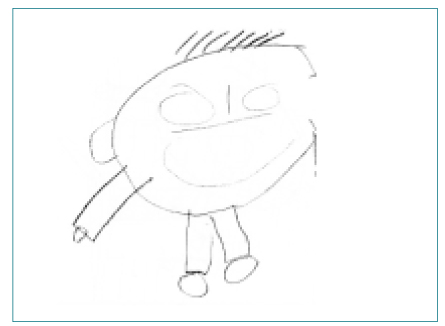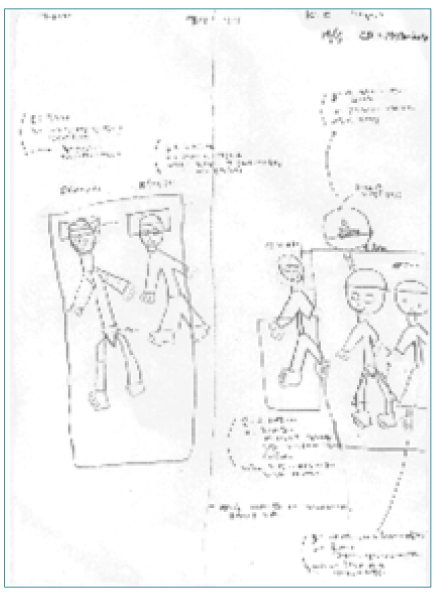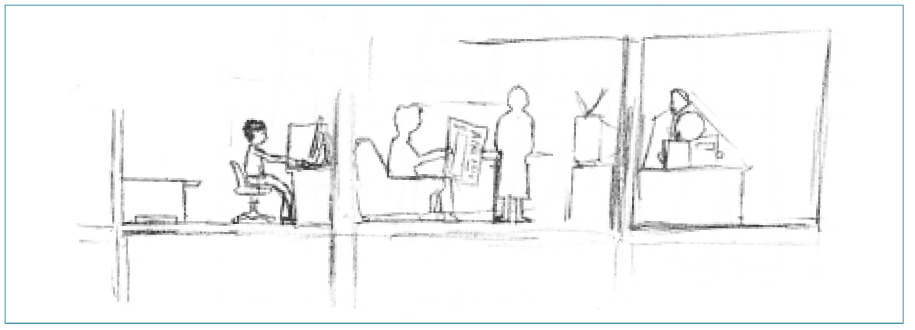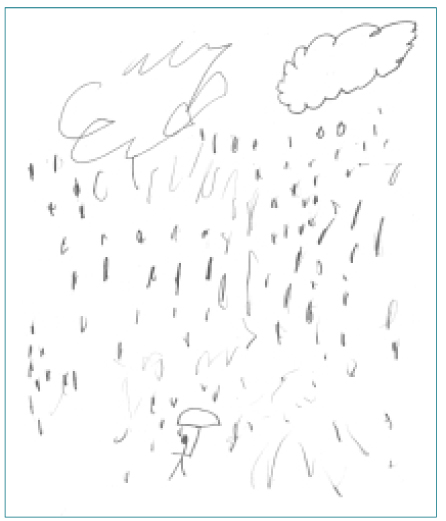 |
 |
- Search
| J Korean Med Assoc > Volume 46(4); 2003 > Article |
Abstract
The world-wide universal language of children is drawing. This non-verbal language gives us an insight into how children see, feel, and think about the world around them. For children younger than age 11, drawing is a very effective window through which they can express and reflect their wishes, emotions, thoughts and concerns. Drawing is useful for all children, including those too young to have yet developed language skills. This tool is equally effective when working with children who have been diagnosed with communication disorders. This paper reviews the historical background of the development of the drawing test as a diagnostic tool. In addition, the characteristics of drawings are reviewed according to the stage of child development. Even though a projective drawing gives us lots of hypothetical information regarding a child's internal psychological and emotional state, it is not a formal psychological test in a strict sense. Therefore, it is inaccurate to reach a conclusion about children's psychological problems based only on clues from a drawing. Moreover, it is important to get additional information through means such as post-drawing inquiry and interviews with family members.
References
1. Goodenough F. Measurement of intelligence by drawings 1926;New York: Harcourt, Brace, & World.
2. Buck J. The House-Tree-Person technique 1948;Los Angles: Western Psychological Services.
3. Machover K. Personality projection in the drawing of the human figure 1949;Springfield, II: Charles C Thomas.
4. Buck J. The House-Tree-Person technique. Revised manual 1966;Los Angles: Western Psychological Services.
5. Koppitz E. Psychological evaluation of human figure drawings 1968;New York: Grune & Stratton.
6. Di Leo JH. Children's Drawing as Diagnostic Aids 1973;New York: Brunner/Mazel.
7. Burns RC, Kaufman SH. Actions, Styles, and Symbols in Kinetic Family Drawings(K-F-D): An Interpretive Manual 1972;New York: Bruner/Mazel.
8. Verinis JS, Lichenberg EF, Henrich L. The Draw-a-Person in the rain technique: Its relationship to diagnostic category and other personality indicators. J Clin psychol 1974;30:407-414.
9. Piaget J. Psychology and epistemology 1971;New York: Grossman.
10. Piotrowski I, Soberski M. The primitive. Journal of Aesthetics and Art Criticism 1941;winter:12-20.
11. Wolff W. The personality of the preschool child 1946;New York: Grune & Stratton.
12. Read H. Art and Society 1966;New York: Schocken Books.
- TOOLS
-
METRICS

-
- 1 Crossref
- Scopus
- 1,115 View
- 3 Download
-
Related articles in
J Korean Med Assoc -
Understanding and Management of Occupational Diseases1997 May;40(5)
Understanding the National Pension2000 July;43(7)
Basic Understanding of High-Resolution CT2000 November;43(11)
Understanding of Alzheimer's Disease through Illustrative Cases2002 April;45(4)










